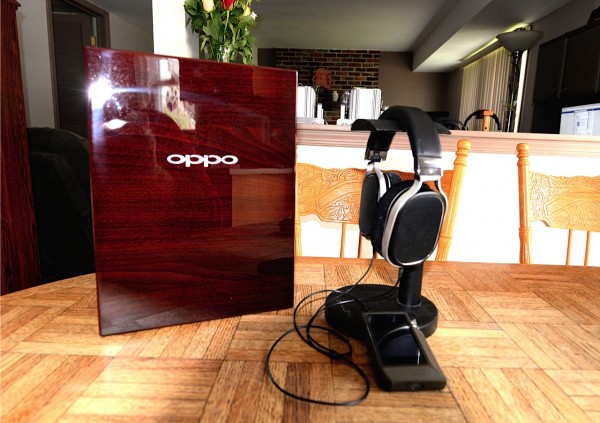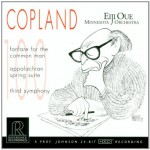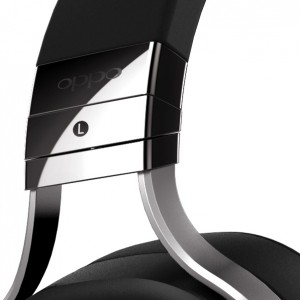
When I got into portable audio (about six years ago), the market was dominated by mainstream companies offering dynamic headphones with prices tags of less than $1k. Of course, there was Stax, with their expensive electrostats, but when it came to exotic brands, the field was limited, to say the least. Then Sennheiser changed the game when they introduced the HD800 at $1499 and Beyerdyanmic followed suit with their T1, which now retails for $1399, and Audeze and Hifiman entered the high-end audiophile scene with planar headphones priced over $1k. Since then, the headphone market has exploded. We now have portable players and smart-devices that deliver much higher music resolution, so anyone with a smart-device who loves music is a potential headphone customer and that equates to tens of millions of people. The general headphone market was said to exceed $8 Billion in 2013 alone. In reaction (or conjunction) to this growth, many companies have been releasing new products into the market nonstop. Most of these companies produce for the general consumer (and with products of questionable quality), yet there are others pushing the boundaries for higher fidelity.One such company is Oppo. First, we need to clear up a confusing detail about the company: There is an electronics manufacturer based in China named Oppo, and then there is OPPO Digital, Inc. – a completely independent company that has licensed the Oppo brand name. As a Silicon Valley company based in Mountain View, California, Oppo Digital has developed a reputation for building Blu-ray “universal” players that have become an audiophile favorite. Oppo Digital has built a solid reputation in the high-end audio/video world with a steady string of products delivering extraordinary quality at relatively modest prices. The team at Oppo Digital launched the PM-1 project almost three years ago. Their research and development effort was initiated in order to explore and produce a planar-magnetic headphone that would not only compete with other planar headphones currently on the market, but refine the approach. They understood that the majority of today’s planar headphones have a variety of bothersome issues that needed to be addressed. Some designs were heavy and uncomfortable, others had poor efficiency and needed extremely powerful amplifiers for optimal performance. The goal was clear: A planar headphone that was both efficient and comfortable. Oppo spared no expense when it came to development. They brought in heavy-hitter Igor Levitsky (from BG Radia) to design and oversee the project and they even implemented a beta-test group (for a year’s time) to help them develop the model reviewed here: The PM-1. Levitsky is a veteran planar ribbon designer and is revered within the industry for his expertise and experience. The beta group was comprised of headphone enthusiasts and members of the extremely popular forum-oriented website: Headfi.org. I’ve been told that the input the beta-test team provided was quite influential on the end product.
PM-1 Design

The PM-1 uses a planar magnetic driver with a push-pull/symmetrical design. According to Oppo, the magnetic system was optimized for maximum sensitivity and consistency. It specs out at 32 OHMs and has an amazing 102 db/1mW sensitivity – making it a breeze to drive. It comes with a standard 3M detachable OCC cable and also a portable OFC copper cable with a 3.5mm jack for use with portable players and smart-devices. The headphone is presented in a finely made wooden box – one of the most stunning I have ever seen. The interior of the box is finished with a white satin material and looks and feels luxurious. The PM-1’s headband is made from high quality lambskin, as are the leather pads. The PM-1 also comes with a portable carrying case that is made from denim (which is also very stylish). The retail price is $1099 and I’m told that there will be a less expensive PM-2 model released in June. The PM-2 will utilize the same drivers and design, but the materials will be of a lesser quality than that used for the PM-1. The projected retail: $699. The weight of the PM-1 is 395 grams (just shy of 1 lb) without the cable attached. The cups swivel and the headband is fully adjustable. The serial number is on the left side of the band. The frequency response is 10—50,000 Hz, providing excellent bass and treble extension. The maximum recommended input power is 500MW long term, and it can handle 2W pulse burst power on input. The design was made to ensure long-term comfort and can be worn for many hours at a time. Complete technical information and design details are available on the Oppo website located here http:/www.oppodigital.com.
Sound







The PM-1 is one of the most comfortable planar headphones I have ever worn. They also happen to be one of the easiest set of cans to wear for extended periods of time. They are also the most “user-friendly” headphones that I have reviewed. The ear-pads can be easily removed and replaced in a matter of seconds. And the cable is easily detached and upgraded (although the sound coming from the OCC copper cable was incredibly clean and satisfying, I never felt the need for an aftermarket cable). The sound leans slightly toward the warmer side without losing a transparent sense of detail. And the bass extends to the deepest depths. The soundstage is similar to the Audeze LCD2. Yet, it is not as wide as either the LCD-X or the Hifiman HE6 (and HE560), but it does have an a generous separation of instruments along with front-to-rear depth imaging. The PM-1 appears, in my opinion, to have a slightly larger soundstage than the original LCD-2, and it never gave me the closed-in feeling that the LCD-2 would sometimes present. The soundstage is not as forward as the Audeze headphones. It is more like a 6th or 7th row seat in the concert hall, whereas the LCD-2 seems to put the listener closer to the stage (almost enveloped in the sound). I actually like the midrange this way best (the PM-1 has outstanding midrange), without any sense of push or forwardness. The instrument separation is good. Comparatively, the LCD-X and Hifiman HE560 present a wider stage and with more separation, but the HE560 is thinner sounding in the midrange. The PM-1 has more body and a fuller sound, and yet manages to avoid being dark. In all, it has a complete and appealing tonality.Listening to Patricia Barber’s “Company” track from Modern Cool highlighted the bass extension. The PM-1 convincingly delivered this live performance. I could feel the impact of the drummer’s sticks hitting the skins and bass extension was excellent (with a presentation akin to what you would expect from a live performance). Barber’s vocals were alive and I could hear excellent treble extension throughout (cymbals were never splashy or tinny sounding). “Hotel California”, from Eagles: Hell Freezes Over showcased the bass performance of the PM-1. I could distinctly hear the kick drum and with serious impact. The performance was breathtaking. The PM-1 was again able to deliver the feeling of being in the hall with the Eagles. Chris Botti’s Impression is another great album for discerning midrange. Botti’s trumpet comes through with terrific inner detail on the PM-1′s. He hits the highest notes without any grain or harshness. The treble is also cleanly extended and always musical. Companion, another record by Patricia Barber, is a sonic masterpiece recorded in Chicago’s famed Green Mill jazz club. The “Use Me” track has a fantastic acoustic bass performance by Michael Arnopol. I could hear every note as his fingers were gliding up and down the strings. Barber’s vocal appears slightly to the left of the stage and you could hear each musician located in a clearly defined space. The tambourine is crisp and present and sounds real. The PM-1 defined the soundstage with pristine and effortless focus. Barber’s Hammond-playing on this track usually lets me know if there are any issues with treble extension. The notes reach up high. Yet, the sound of the organ was never harsh here, and the bite of the Hammond was as it should be. On Doug McLeod’s excellent recording of “Rosa Lee”, from his 2013 Reference Recordings album, There’s a Time, is takes you right into the club – blues club, that is. With the PM-1′s I could easily hear the inner detail of this recording. The brushwork on the drums is distinctive and Doug’s guitar playing is present. The PM-1 drew me into the performance and let me hear everything with effortless clarity. The dynamic sound of the PM-1 made this a very involving album to listen to. I forgot about the headphone and just enjoyed the performance. On Black Nights, the second track, I could hear the acoustic guitar with a crisp accuracy – the body of the guitar and the tonality of the instrument were rendered perfectly. Return of the Guardians, by David Arkenstone, showcased how well the PM-1 could handle a complex recording with extreme treble extension. I could hear the background chorus in full detail and the orchestra violins were never harsh. The complex textures in the recording were all clearly reproduced without crowding. The speed of the PM-1 was again highlighted on this recording – headphones without such speed can fail easily without delivering a believable performance. The PM-1 was easily up to the task and reproduced the sounds convincingly. Copland’s “Fanfare” on the Reference Recordings label, is a great test for any headphone because the dynamic range of the recording is enormous. The PM-1 relayed the proper impact and speed necessary — the sound never collapsed — and I could hear deep into the soundstage.
Comparisons
As mentioned before, the Audeze LCD-X (priced at $1699) has a more developed soundstage and does exhibit more air and instrument separation. Overall transparency is also more apparent with the LCD-X. Priced substantially higher than the PM-1, the LCD-X should deliver more performance, and it does. But the PM-1 did not embarrass itself in such exalted company. Not at all. More interesting was when comparing the PM-1 to the original Audeze LCD-2 (which was eventually replaced with the LCD 2.2). The PM-1 held up extremely well with such competition. I preferred the design and comfort of the PM-1 to the LCD2 (and also to the 2.2) – the lighter weight provides a more comfortable listening session. Also, the PM-1 delivered better separation and more air than the LCD-2. The HE560 headphone prototype I have here for evaluation revealed a better soundstage, with good air and separation. The HE560 is also excellent at portraying detail, even more so than the PM-1. Meanwhile, it seems that the PM-1 is built to a much higher standard and the sound of the HE560 sound (the prototype in my possession) has a thinner sounding midrange – not what I would consider bright, but lacking the body that makes the PM-1 so enjoyable. The PM-1 delivered better overall dynamics and musicality over the HE560 prototype, but I suspect that the HE560 production model will make for an interesting and competitive comparison once it is officially released. The HE6 has more detail and a better overall sound, but the biggest drawback with the HE6 is that it is so inefficient that it needs a beast of an amplifier to drive properly. The PM-1 is the most efficient planar headphone currently on the market and this could be one of its most compelling features, given that planar-magnetics are not prized for their sensitivity. The Sennheiser HD800 has a bigger soundstage and revealed far more focus and more information from any given recording, and the comfort of the HD800 is one of my favorites. The PM-1 cannot match the detail or soundstaging abilities of the HD800 (most headphones can’t compete with the imaging and focus of the HD800), but it is priced substantially lower, and so the comparison may not be fair. Combined with the Astel&Kern AK240, the synergy was to die for. The more I used the portable player along with the PM-1, the more addicted I was. The sound is dynamic and unbelievably alive. The AK240 showcased what the PM-1 could offer. I could feel the music with intense emotion. It was enveloping.
Conclusions
Back when I began reviewing planar headphones in 2010 I was excited. As a Magneplanar fan, and former owner, it was hard not to want that type of sound from a headphone, especially one that was easy to drive and had planar transparency. In fact, the Audeze LCD-2 was truly a game-changer back when it was first released. It rewrote the rules on how portable music could sound. The PM-1 is Oppo Digital’s first attempt at designing and building a planar headphone. It was a project that took over three years to come to fruition and Oppo’s careful research and development (and the use of a beta group) is admirable. The PM-1 delivered all the goods for me and is probably the best-built planar headphone currently offered. It hits most of the marks when it comes to what I look for in a reference headphone. It has musicality and is an exciting, well-designed debut headphone. The company really listened to what people were looking for in a reference headphone and delivered the goods. The $1099 price tag puts it in reference-caliber territory. For the money, you get quality. All the materials used are top notch. The cable is outstanding, most likely eliminating the need for an aftermarket cable. The lambskin headband and ear pads are first class. The additional velour pads are the finest I have had in any of my headphones — they feel like silk. The comfort level of the PM-1 is amongst the best of any headphone manufactured today. The PM-1 is designed for longevity. The build quality is at a level that other manufacturers should benchmark and take note of. It reigns for me as king in build quality and comfort, and the sound is excellent. The PM-1 delivers the music in a dynamic and involving fashion and the only improvement I could imagine is perhaps a wider and more extended soundstage. The design team at Oppo really delivered with the PM-1. It looks beautiful and is a terrific first effort by a company committed to delivering high quality (and innovative) products that perform well above their price points. This is a stellar product that gets my highest recommendation. Anyone looking to either test the waters with a planar design or simplify their system with a product that delivers the music should check out the Oppo PM-1.















Reply
Reply
Want to join discussion?
Feel free to contribute!